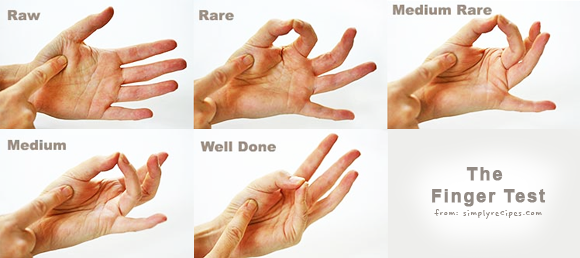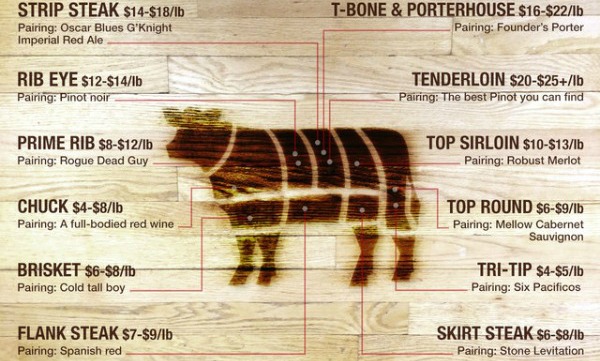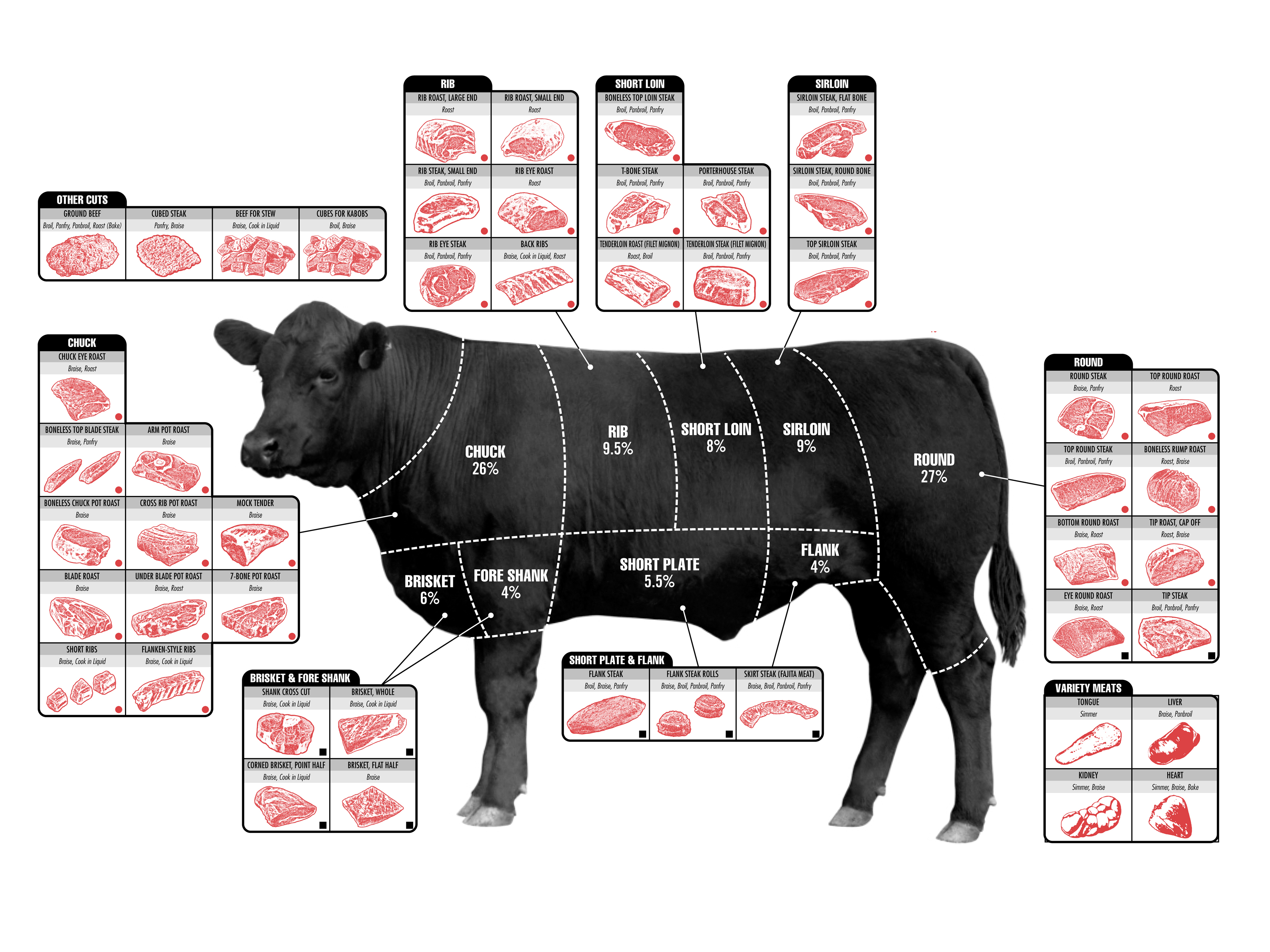See also Tips: Burgers and Tips: Steaks and Cow Parts
Buying your Meat
- Don’t skimp on buying a steak. You would spend $40 on a really good steak at a restaurant, consider spending nearly that much on a quality piece of meat with good marbling. See the chart below from Food Beast for price ranges of different cuts of meat.
- Buy an aged steak. More developed flavor. Better yet, buy a nice cut and dry age it yourself. Put on a rack and salt both sides. Put in the refrigerator for 48 hours uncovered.
- The ONLY time you should press down on your steak is when it is first put on the grill. Put the “serving side” onto the heat first, then press it down to get maximum contact. Don’t press down again after you flip it.
- Consider buying and cooking one thick steak (2 inches is a nice thickness) to serve multiple people. The overall quality will be better.
- Bone in cuts of meat will generally have a more complex flavor.
Prepping your Meat for Cooking
- Searing your Meat:
- Get a good sear on your meat. Sear means flavor and appearance will be enhanced.
- Tie your meat up with a string around the perimeter to hold and shape your meat.
- Steaks must come up to room temperature before you start to cook it (30-60 minutes)
- Salt your meat liberally.
- Salt it the night before, and refrigerate it overnight
- Dry Age Your Meat: Place on a wire cooling rack in the refrigerator for 24-36 hours before cooking. This will allow the moisture to be removed from the surface of the meat. If you are marinating your meat, just be sure to press it VERY dry before searing.
- Before searing, add pepper
- Sear at medium-high (about 400º) for about two minutes per side on a cast iron skillet. Sear the presentation side first. Sear even the sides of a thick steak.
Cooking your Meat
- GENERALLY SPEAKING thin cuts of meat will cook quickly over high heat, while thicker cuts will cook slowly over low or medium heat.
- When grilling a steak, consider a 2-3 inch thick Rib-eye on the bone steak. This will feed 4-6 people. Take bone off before serving. Cut against the grain in thick slices – about 3/4 inch.
- Cook all FOUR sides on the hot side of the grill, then move to the indirect side of the grill and cook until internal temperature is 125º
- Start over high heat.
- Try to get steak to medium rare throughout the entire steak. About 250º for six hours or until internal temp is about 120º
- Rest for ten minutes before cutting
- I consider two thermometers critical for any serious chef, even if they will remain an amateur chef for their entire life. I purchased both of mine at ThermoWorks.
- The first is an internal temperature Instant Read ThermaPen. It is about $80 but I have had mine for about ten years. It needs a new battery about every three years.
- This one is less expensive, but I find that I use it more than the internal probe. I usually use it for seeing if my skillet is up to heat, but it is also good to see if the blacktop will burn the paws of my dog. It’s also a lot of fun to play with at night. It is an Industrial Infrared Thermometer and is about $50.
- If you can only buy one, buy the Infrared Thermometer.
- If you ABSOLUTELY can’t afford to buy one, here is a way that you can test your meat reasonably well. Use the finger test. This wonderful photo is from WattaLyf.
This graphic is from Food Beast
Click for an enlargement.
Notes about cuts of meat
- Boneless Rib Eye-more fat, more flavor
- Ribeye – more marbling and more flavor
- Filet Mignon – very tender, but not as much flavor
- Porterhouse-filet
- Del Moneo – no filet
- Tenderloin-most tender
- Sirloin-good for grill
- London Broil-top round
- Flank Steak-marinate 24 hrs & grill – Fairly lean and needs fat
- Brisket-first cut-slow cooker
- Brisket-second cut-fat-hamburger
- Top Round-good for oven roast @ 350
- Bottom Round-pot roast-slow cooker
- Skirt steak – outside chest toward ground – thougher
- Hanger steak – behind skirt steak – much more tender
Here is another good chart. Click to read the details.



